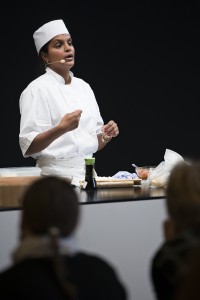
Some sushi rice is harder to cook because of the quality of the rice.
In Japan, there are many different types of sushi rice. Some types of rice are very exclusive because the quality is very high. Other types of rice are of normal quality with an average quality.
Some of the exclusive rice types are much harder to cook because; they lump more than other rice. This means that it is harder to cook sushi rice to perfection.
In the actual finishing of the cooked sushi rice, more and more advanced techniques must be used to prepare the rice for sushi.
The cooked sushi rice should be firm and soft at the same time. The rice grains must not be raw inside, but they must also not be cooked so much that they have a consistency like porridge. It is a balancing act that can be difficult to hit.
These are some of the reasons why sushi rice is harder to cook.
At the Sushi course for beginners, you get the shortcuts you need to be able to cook sushi rice to perfection at home.
_
Zoë has lectured and held sushi courses for A. P. Moller – Maersk, Hugo Boss Nordic, Novo Nordisk, Novartis, Velux, Gorrissen Federspiel, Beierholm revision, Elbek & Vejrup and many more.






